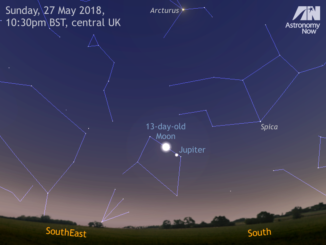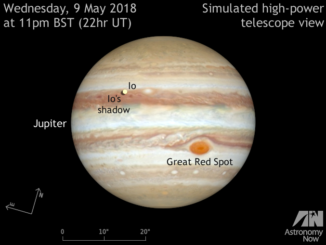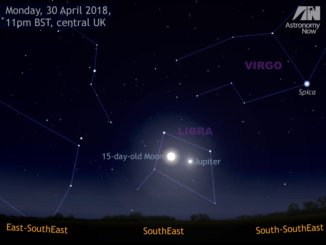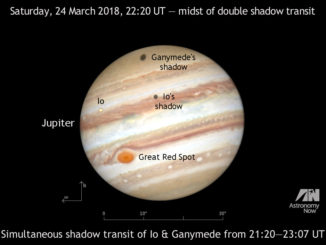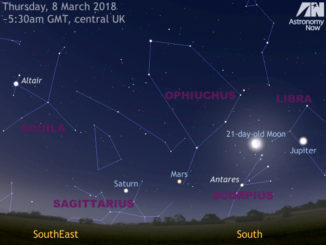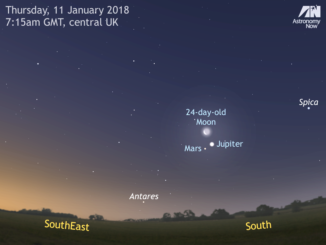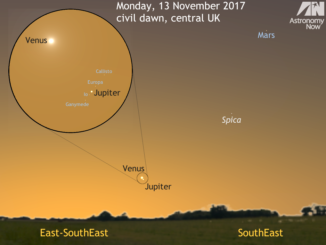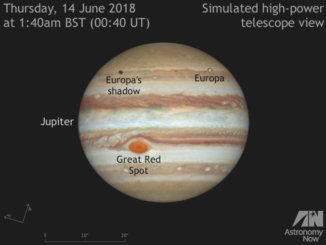
June’s Jupiter events visible from the UK
Jupiter has passed opposition, but the solar system’s largest planet is still putting on a magnificent show in the southern sky at dusk. Backyard telescopes readily reveal its Great Red Spot storm feature and four main moons constantly playing tag. Here’s our full guide to Jovian events visible from the UK in June.

